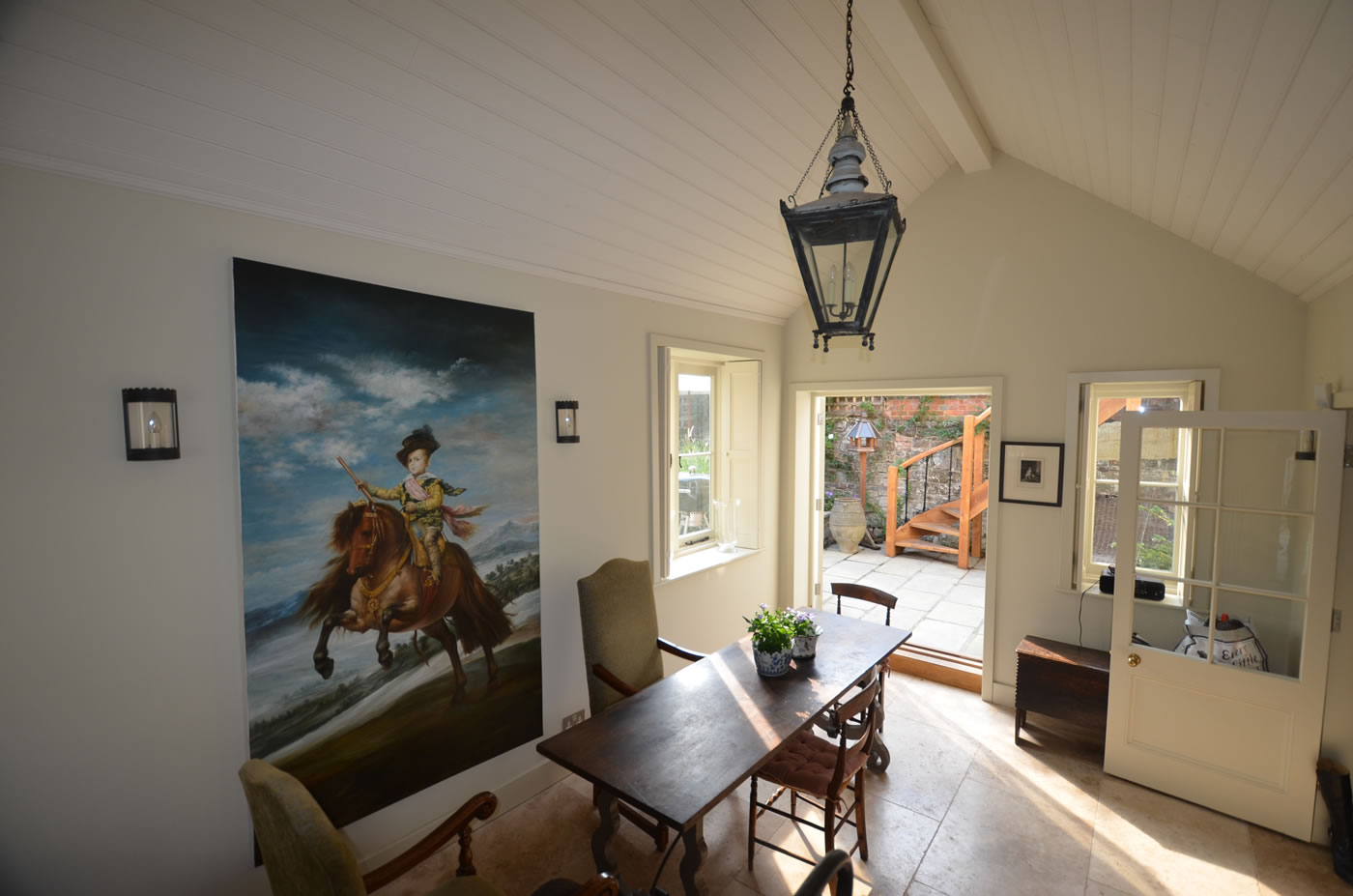17th Century Georgian Town House
Commissioned by private clients to restore the original house and create a single story addition to link the house to the walled garden beyond.

The house was on four levels – basement, ground floor, first and second floor built with brick elevations under clay peg tile roof slopes.
It was located within the heart of a busy town and had been a public house with a brewery for many years, an antique shop and finally a private residence.
It had suffered many years of neglect and although the perimeter walls were structurally sound, timber decay abounded throughout and hence the suspended timber floors were removed and replaced to the ground and first floors. Structural steel insertions were also required to provide adequate support to the floors following the earlier historical removal of supporting walls.
The basement required damp proofing to the walls and floors and following the provision of a sump, the surfaces were treated with Delta Membranes as a tanking process and finished with dry lining to provide perfect accommodation for playrooms.
Since the property had Grade II Listing, there was a long period of negotiation with the conservation departments to allow internal alterations, revised fenestrations and a new garden room to replace former outhouses.


Following the grant of permission, unsightly Upvc windows were replaced with bespoke period timber casements, parts of the outhouses removed and walls rebuilt with salvaged Bargate sandstone to form the perimeters of the new garden room.
A new roof was formed with a vaulted ceiling and the roof slopes above finished with peg tiles and lead gutter work to form the links to either side.
The existing roofs to the main house were stripped and replaced with matching tiles and gutters replaced in cast goods. The exterior brickwork was subject to careful repairs and treated with Farrow and Ball external masonry paint.
The fireplace openings were exposed and restored to each room with period fireplaces supplied by Chesneys in timber or marble to the surrounds with cast iron grates and slate hearths.


The entrance hall was enlarged with the removal of a study to form a large room to greet guests from the street, the internal walls were lined and fully panelled in timber with a top cornice rail providing a stunning and warm entrance to the house.
Accommodation comprised of:
Basement – 2 rooms with centre archways, storage cupboard, boiler room and lightwells
Ground Floor – Kitchen and Family Room, Dining Room, Entrance Hall, Stairs, Hallway, Utility Room, Larder, Garden Room.
First Floor – Stairs and Landing, Sitting Room, 2 Bedrooms and Family Bathroom
Second Floor – Stairs, Hall, Master Bedroom, Wardrobes and Master Ensuite.
The existing plumbing and electrical systems were removed and replaced with low energy systems, a new condensing boiler installed in the basement with pressurised hot water cylinders, underfloor heating within the ground floor rooms and within the bathroom floors.
Kitchen units were provided by John Lewis of Hungerford, chinaware and brassware to bathrooms provided by C P Hart and tiles in a delightful selection of limestone to the walls and floors.


The walled gardens contained small courtyard settings paved and laid to grass. A small privy was relocated to the rear of the garden built with salvaged bricks and roof tiles to form a perfect potting shed.
The house and the gardens are simply glorious throughout and a tribute to our client.











